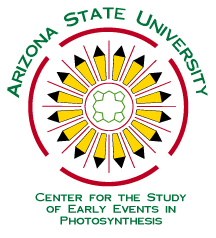 Mr. Schneider's Plants
Page
Mr. Schneider's Plants
Page Mr. Schneider's Plants
Page
Mr. Schneider's Plants
Page
This is some of the links, notes, and information we have put together about plants. ...more to come!
Plants Links
| www.naturegrid.org.uk/qca/flowerparts.html | |
| www.ag.arizona.edu/pubs/garden/mg/botany/plantparts.html | |
| www.quia.com/jg/99list.html | |
| www.urbanext.uiuc.edu/gpe/gpe.html |
| Can't find it?
Here's help » » |
![]()
Plants can be either herbaceous or woody.
Most herbaceous plants have stems that are soft and green. Most flowers, vegetables, and houseplants fall into this category.
Most woody plants have stems that are hard. These plants have bark. These are stems we use to make furniture and houses.
The Life Cycle of Plants
A plant's life cycle describes how long a plant lives or how long it takes to grow, flower, and set seed. Plants can be an annual, perennial, or biennial.
Annual
A plant that completes its life cycle in one growing season. It will grow, flower, set seed, and die.
Examples: marigolds, tomatoes, and petunias.
Perennial
A plant that lives for 3 or more years. It can grow, flower, and set seed for many years. Underground parts may regrow new stems as in the case of herbaceous plants, or the stems may live for many years like woody plants (trees).
Examples: daisies, chrysanthemums, and roses.
Biennial
A plant that needs two growing seasons to complete its life cycle. It grows vegetatively (produces leaves) one season, goes dormant or rests over the winter, and then grows flowers, sets seed, and dies the second season.
Examples: parsley, carrots, and foxglove.
Plant Parts
Basic parts of most all plants are roots, stems, leaves, flowers, fruits, and seeds.
The roots help provide support by anchoring the plant and absorbing water and nutrients needed for growth. They can also store sugars and CHO’s (carbohydrates) the plant uses to carry out other functions.
Plants can have either a taproot system (such as carrots) or a fibrous root system (such as turf grass).
Stems carry water and nutrients taken up by the roots to the leaves, and then the food produced by the leaves moves to other parts of the plant. The cells that do this work are called the xylem cells (move water up) and phloem cells (move food down). Stems also provide support for the plant allowing the leaves to reach the sunlight they need to produce food.
Leaves
are the food making factories of green plants.Leaves are made to catch light and have openings (Stomata) to allow water and air to come and go. The outer surface of the leaf has a waxy coating called a cuticle which protects the leaf.
Leaves catch light to facilitate the food making process called photosynthesis. In this process, carbon dioxide and water in the presence of chlorophyll (the green pigment) and light energy are changed into glucose (a sugar). This energy rich sugar is the source of food used by most plants.
supplies food for the plant and oxygen for other forms of life.
A green plant helped make the oxygen you are breathing today.
![]()
Carbon Dioxide + Water + Chlorophyll + Sunlight = Oxygen + Sugar
This is usually read as carbon dioxide
plus water in the presence of light and chlorophyll
produces oxygen and the sugar glucose.
 http://photoscience.la.asu.edu/photosyn/education/experiments/protein_exp/cover.htm
http://photoscience.la.asu.edu/photosyn/education/experiments/protein_exp/cover.htm
Flowers
not only look pretty but, in fact, are important in making of seeds. Flowers have some basic parts. The female part is the pistil. This is made up of three parts: the stigma, style, and ovary. The stigma is the sticky knob at the top of the pistil. It is attached to the long, tubelike structure called the style. The style leads to the ovary which contains the female egg cells called ovules.The male parts are called stamens and usually surround the pistil. The stamen is made up of two parts: the anther and filament. The anther produces pollen (male sperm cells). The filament holds the anther up.
During the process of fertilization, pollen lands on the stigma, a tube grows down the style and enters the ovary. Male sperm cells travel down the tube and join with the ovule, fertilizing it. The fertilized ovule becomes the seed, and the ovary becomes the fruit.
Petals are also important parts of the flower because they help attract pollinators such as bees, butterflies and bats. You can also see tiny green leaf-like parts called sepals at the base of the flower. They help to protect the developing bud. Insects and other animals help some flowers become pollinated.
The fruit is the ripened ovary of a plant containing the seeds. After fertilization, the ovary swells and becomes either fleshy or hard and dry to protect the developing seeds. Many fruits help seeds spread (maple seeds). Many things we call vegetables are really fruits (tomato, cucumber, beans).
Every seed is a tiny plant (embryo) with leaves, stems, and root parts waiting for the right things to happen to make it germinate and grow. Seeds are protected by a coat. This coat can be thin or thick and soft or hard. Thin coats don't protect the embryo well. But thick coats can let the embryo survive some tough conditions.
The seed also contains a short-term food supply called endosperm. This is found in the plant's cotyledons. Plants with one cotyledon (like corn) are called monocots. If they have two cotyledons (like beans), they are called dicots.
Back to topIf this is not technical enough try this 13,480 word essay on photosynthesis.
http://www.worldofteaching.com/powerpoints/biology/plantsgeneral.ppt
Notes from the Board
Some practice from 
http://www.quia.com/cb/22926.html
http://www.quia.com/jg/420194.html
http://www.quia.com/cb/94739.html
http://www.quia.com/cb/86264.html
Report Bad Hyper Links
Here
© 2000-2007
4s Computers. All Rights Reserved
Author: Jeff "Slim" Schneider
Design & upkeep by 4s Computers
Armour, South Dakota, USA